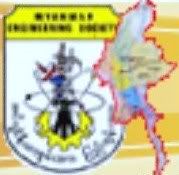Welcome to the blog of the New Generation of Metropolitan
The Blog of the New Generation of Metropolitan was created in march 2007 so as to form a venue for exchange of information and best practices between the engineers who specialized in tunneling and metropolitan for public transport services in the large our large cities. Three months after its creation, it now brings together 7 such authors, responsible for improving the knowledge of some visitors.
Nowadays, the task of keeping people and goods on the move now means the way ahead for new infrastructures is underground. Creating shortcuts to pass under roads and buildings, rivers and sometimes under entire cities, bringing both mobility and tranquility back to our urban centers. So, we all need to solve the problems of public transportation for the following reasons:
- large cities are not viable without public transport. The high density of inhabitants and jobs makes space a very scarce resource. As a consequence, public transport, which is the most efficient mode of transportation in terms of space consumption per traveler, is the best answer to mobility needs in densely populated areas. The major disruptions which occur in large cities when public transportation fails to deliver its services (accidents, strikes) are the best illustration of this strong dependence.
- Large cities suffer heavily from congestion and nuisances caused by the excessive use of private car. Pollution, noise, accidents are particularly acute in large urban environments and affect the lives of thousands of people.
- Metropolitan areas often have very complex institutional frameworks, involving different levels of authorities in charge of urban planning and transportation policies (municipalities, metropolitan area, region and sometimes even national governments, especially in the case of capital cities). Therefore, co-ordination and coherence of policies is a very crucial aspect to ensure that citizens can have access to an integrated and high-quality network of public transport.
- Public transport networks are usually complex in large cities, requiring a strong integration. Metropolitan areas usually have several public transport modes in operation (bus, tramway, metro, regional rail services, sometimes and water services). It is also frequent to have different companies operating parts of the public network of a metropolitan area. Integration of modes and of operators (physical integration of services, integration of fares and of information, etc.) is therefore a fundamental task of transport authorities so as to be able to offer travelers a seamless trip.
All these characteristics highlight the importance, as well as the complexity, of the missions of public transport authorities in large cities.
This blog presents the technologies, the construction techniques and the latest news of the tunnels, subway or metropolitan engineering field, the publications of this blog, most of which can be downloaded from the site, such as news, videos, eBooks and other articles about subway and tunneling in the world, and lastly some useful links to other national or international organizations active in the field of public transport (section Links).
Creators of future underground structures

အားလံုးရဲ႕ သင္ၾကားမႈ၊ သင္ယူမႈ အေတြ႕အႀကံဳမ်ားကို ေ၀မွ်ေပးၾကဖို႔ ေတာင္းဆိုပါတယ္။ စာတမ္းေခါင္းစဥ္ အလိုက္ တစ္ေယာက္နဲ႔ တစ္ေယာက္ field မတူတဲ့ အတြက္ အားလံုးကို ႏွ႔ံစပ္ဖို႔ဆိုတာ မလြယ္ပါဘူး။ မိမိတို႔႔႔ရဲ႕ ဘာသာရပ္ အလိုက္ share လုပ္ေပးၾကဖို႔ တိုက္တြန္းပါတယ္။ အခုဆိုရင္ ျမန္မာျပည္ရဲ႕ ပထမဆံုး ရထားလမ္း ဥမင္ကို ေဖာက္လုပ္ ၿပီးသြားပါၿပီ။ ဥမင္အရွည္ တိုေတာင္း ေပမဲ့လည္း ကိုယ့္ရဲ႕နည္းပညာ အေျခအေနအရ ၁၀ ႏွစ္ေက်ာ္ ၾကာေအာင္ တည္ေဆာက္ ခဲ့ရတယ္ဆိုတာ အားလံုးအသိပါ။ ဒီေတာ့ အဆင့္ျမင့္ ပညာေတြကို သင္ၾကားေနတဲ့ ကြၽန္ေတာ္တို႔အေနနဲ႔ မိမိတို႔ ဘာသာရပ္အလိုက္ အေကာင္းဆံုး ႀကိဳးစားသင္ယူၾကဖို႔ တိုက္တြန္းလိုပါတယ္။ အနာဂတ္ ျမန္မာျပည္ ေျမေအာက္ ေဆာက္လုပ္ေရးရဲ႕ စိန္ေခၚမႈမ်ားဟာ ကြၽန္ေတာ္တို႔ လက္ထဲကို မလြဲမေသြ ေရာက္ရွိလာမွာပါ။ တန္ဖိုးႀကီးမားစြာ ေပးဆပ္ၿပီး သင္ၾကားခဲ့ရတဲ့ ပညာရပ္မ်ားကို ဆက္လက္ၿပီး မေမ့မေလ်ာ့ ေလ့လာအားထုတ္ သြားၾကဖို႔လည္း လိုပါတယ္။
လက္ရွိ အေျခအေနေပၚမွာ အေကာင္းဆံုး ႀကိဳးစားၿပီး ယံုၾကည္ခ်က္ စိတ္ဓာတ္ အျပည့္နဲ႔ ဆက္လက္ ခ်ီတက္ၾကပါစို႔လို႔ တိုက္တြန္းလုိက္ရပါတယ္။
* မိမိတို႔ရဲ႕အျမင္မ်ားကို ဤဘေလာ့ဂ္ေလးမွာ ၀င္ေရာက္ ဖလွယ္ၾကဖို႔ ေဆြးေႏြးၾကဖို႔ ဖိတ္ေခၚပါတယ္ *




















Post a Comment
::: Thanks for Your Comment :::
စကားလံုး၊ စကားစုေလးေတြမွာ space ေလးေတြ ျခားၿပီး ႐ုိက္ထည့္ေပးရင္ ပိုေကာင္းပါတယ္။
@The MyMetroworld